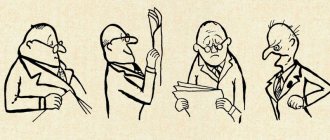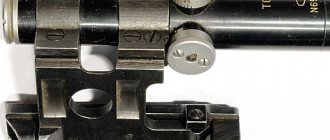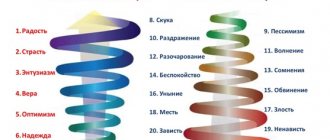Types and classification
The principle of operation of a fire extinguisher is to store a special mixture to extinguish a fire. Brands of devices differ in the composition of the pumped material and the volume of the cylinder.
Detailed information is visible in the video:
What types of fire extinguishers are there:
- Air-foam.
- Powder.
- Carbon dioxide.
- Cold ones.
- Aquatic.
- Air emulsion.
In addition to the above, fire extinguishers are classified according to the following indicators:
- method of operation;
- principle of influence;
- mass of charge used;
- volume.
Let's talk about this variety in more detail.
According to the method of operation
The devices are divided according to a number of characteristics. Let's talk about their activation.
Manual
The devices are used to extinguish fires of any class. The mechanism is started by pressing the lever.
Automatic/self-actuating
The units are activated without external influence. They are equipped with temperature sensors that indicate certain degree limits. When the specified indicators are exceeded, the system is activated and fire extinguishing material is released. Used in areas of high fire risk.
Combined
This type includes indicators of the previously considered two options. It is widely used but expensive. Can be used to extinguish buildings of any type.
According to the principle of influence
Fire extinguishers can be classified according to the substance inside.
Carbon dioxide
Fire extinguishing with this type of fire extinguisher is carried out by reducing the temperature and exposure to oxygen-isolating flakes. They are used for fires in electrical installations, wiring, and various materials. As a rule, they are used in transport and indoors.
Their disadvantages include:
- rapid volatilization of fire extinguishing agents;
- the possibility of frostbite if operating rules are violated;
- harmful effects of carbon dioxide;
- impossibility of use without external influence.
Freon
Fire extinguishers of this type have an important purpose, which is to be used at secret facilities or expensive equipment. For example, museum exhibits, equipment or documentation.
Their advantages include:
- Ease of use.
- No damage upon contact with the active substance.
- Efficiency in extinguishing.
There is only one existing minus - the negative impact of freon on humans.
Foam/chemical
Characteristics of a foam fire extinguisher.
Designed to eliminate the combustion of flammable objects and materials. The container contains two reservoirs with different products. One is acidic, the other is alkali.
When the fire extinguisher is turned over and the trigger mechanism is activated, the substances are mixed and delivered to the source of the fire.
Air foam
A device consisting of a gas cylinder and a foam concentrate. The principle of operation is simple - the trigger mechanism is activated. The gas inside squeezes out the mixture, which comes into contact with oxygen and forms foam.
For safety reasons, fire extinguishers of this brand are not used for fires in live electrical installations. Their advantage is a relatively long operating time. Disadvantage: low recharge time, temperature restrictions on use.
Air emulsion
Fire extinguishers are safe and reliable. They are used to eliminate fires of existing fire classes - A, B, C, E. Their cylinder is filled with the substance “FRAM-VS”. The functionality of the device is checked using a pressure gauge installed on the housing.
Existing representatives of the class have an increased ejection range of explosive explosives, and also have a long release time for the material pumped into the cylinder. The operating temperature ranges from minus 40 to plus 50 degrees. Service life – 10 years. Recharging does not occur.
Powder
Fire extinguishers are equipped with a double effect - a dust-like mixture and gas, which are pushed out by pressure when supplied, loosen and turn into a homogeneous mixture. The substances contained in the cylinder have a wide spectrum of action.
They have the following properties:
- The liquid supplied outside is easily adsorbed.
- Once on the flame, the powder inhibits the heat generated.
- When interacting with burning objects, a non-flammable edge is formed.
- When heated, the spraying mixture reacts and releases substances that promote self-extinguishing.
The disadvantages of a powder fire extinguisher include:
- Contamination of the premises.
- Technical penetration rates are low, which increases the risk of re-ignition.
- Tracking.
- Nozzle becomes clogged during use.
Advantages of the device type:
- Versatility. Can be used as a transport, mobile or manual option.
- Harmlessness.
- Price.
When choosing a fire extinguisher, be aware of low efficiency. Therefore, sometimes it is better to take a more rated option.
Water
The option is a reliable choice for extinguishing various materials. Has good cooling ability, harmless, effective.
The disadvantages include:
- recharge frequency – once a year;
- impossibility of use at sub-zero temperatures.
By charge mass
Classification of fire extinguishers by type and purpose can be made taking into account the material pumped into the cylinder.
Based on the weight of the content, devices are divided into groups:
- From 450 kg and above - a stationary version of the model, reminiscent of a fire extinguishing system.
- From 20 to 450 kg - mobile models that are installed in subways and gas stations.
- From 2 to 20 kg – fire extinguishers located in small buildings, offices, warehouses.
By body volume
Modern fire extinguishers also differ in the amount of material pumped.
There is the following capacity of cylinders:
- up to 5 l. – small hand-held models;
- 5-10 liters – devices for industrial purposes;
- from 10 l. and above - large portable or stationary models.
Procedure for using an air-foam fire extinguisher
An air-foam fire extinguisher, compared to a water one, copes better with eliminating fires of categories A and B. Thus, the device can be used to extinguish liquids that have an oily, flammable structure (petroleum products). The foam coming out of the nozzle blocks the flow of oxygen into the burning substance, thereby localizing the fire object. However, they are prohibited from extinguishing electrical equipment, cables, and wires that may be connected to the power supply network. In addition, this device cannot be used when extinguishing products and buildings made using alkali metals (aluminum, magnesium, etc.).
To quickly begin putting out a fire, you should know how to use this type of fire extinguisher:
1. Break the seal, rotate the handle (cover) of the locking mechanism 180 degrees.
2. Turn the fire extinguisher upside down. (This is necessary to mix the acid and alkaline components of the charge, resulting in foaming.)
3. Remove the handset and point it at the fire object, after which you can press the lever.
After the fire has been extinguished, the device is transferred for inspection, refilling and sealing. In this case, the solution remaining after using the device is removed naturally.
Marking
Fire extinguishers, regardless of manufacturer and classification, meet existing requirements and contain the following information on the label:
- Designation of type and model.
- Charge type.
- Full weight.
- Method of use and fire class.
- Pressure indicators.
- Additional markings.
The last point means applying a symbol-digit code containing a number of information to the cylinder. An example is below.
Description of fire classes.
By purpose
Depending on the class of possible fire, fire extinguishers are divided into different classes of fire:
- class A – ignition of solid flammable substances;
- class B – ignition of liquid flammable substances;
- class C - ignition of gaseous flammable substances;
- class D - ignition of metals and substances they contain;
- class E - fire of electrical installations that are energized.
Checking and filling standards
Above, we looked at what types of fire extinguishers there are, and talked about their features and characteristics. It is worth noting that all devices for extinguishing a fire have a list of operations carried out at a certain frequency.
So, for example, after using a cylinder, the remaining charge in it is removed, and only then a new one is pumped in. Refueling is carried out in accordance with existing standards, as a rule, no more than once every six months. Complete replacement of the substance - at least once every five years. There are no regulatory deadlines for EIA.
Features of the use of powder type fire extinguishers
A powder fire extinguisher is a universal type of fire-fighting equipment used to extinguish most fires. In addition to localizing class A and B fires, the device is designed to extinguish fires of categories C (combustion of gaseous substances) and E (fire of electrical equipment under voltage up to 1 kV). However, it is unsuitable for extinguishing substances that can burn without oxygen.
The cylinder, which is marked with the abbreviation “OP,” contains a powder composition. Its components are finely dispersed mineral salts, hydrophobic elements, and other additives that help keep the powder composition in working condition. The principle of operation is based on covering the fire site with fire retardant powder, isolating the burning material or substance from the flow of oxygen.
The instructions for powder-type fire extinguishers are identical to the rules for using water-type fire extinguishers: removing the seal - removing the pin - directing the hose to the flame - pressing and holding the lever. To use the device correctly, you should take into account the specific features of using powder-type fire extinguishers . Thus, it is not recommended to use the device in small enclosed spaces, since a toxic dust curtain is formed. And the surface of the material on which the powder has fallen cannot be restored.
conclusions
So, it is important to know what a fire extinguisher is. A fire extinguisher is a unit that extinguishes a fire with a special composition. The types of fire extinguishers and their applications were discussed above. They are varied and have a wide range of uses. Each brand has its own characteristics, technical indicators, and composition. The last indicator is important.
When buying a device, consider what substance is pumped into the cylinder. Otherwise, in the event of a fire in a car, it may happen that the selected fire extinguisher is not suitable to eliminate the source of the fire.
You can learn about fire classes from the following video:
Rules for working with a fire extinguisher
- When extinguishing electrical installations with a powder fire extinguisher, apply the charge in portions after 3-5 seconds
- Do not bring the fire extinguisher closer than 1m to a burning electrical installation.
- Direct the charge stream only from the windward side
- Do not touch the mouth of a carbon dioxide fire extinguisher with your bare hand to avoid frostbite.
- When extinguishing oil products, use a foam fire extinguisher to cover the entire surface of the fireplace with foam, starting from the near edge
- When extinguishing an oil fire, it is prohibited to direct the charge stream from top to bottom.
- Direct the stream of charge to the nearest edge of the fire, gradually deepening as it extinguishes
- Extinguish the fire below from top to bottom
- If possible, use multiple fire extinguishers to extinguish the fire.










